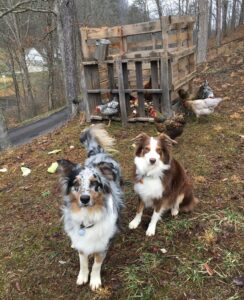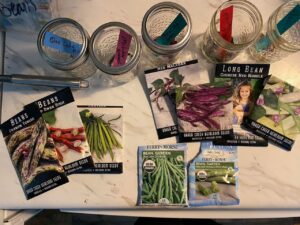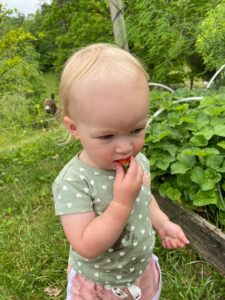As I have been planning my garden this year, ordering seeds from my favorite companies far away, preparing soil, adding in beds, and all the other things I’ve learned you do before planting time, I have been trying to be mindful of my remaining real modern day gardening problems I’ve had the last couple of years since I’ve been learning to grow my own food. These are real and somewhat embarrassing problems that I feel I am not alone in when it comes to my generation and any new gardener who is starting from scratch when it comes to acquiring all the skills needed to grow food for a family. My problem’s started out as not knowing how to grow any of my own food: how to start seeds, what varieties to pick, where to put my gardens, how to keep them fed and watered, the difference between lifeless dirt and living, breathing soil, and the list goes on. I have by no means become an expert in the process of growing food. I feel that the gardener is always a student no matter their experience. With all of these new skills of growing food, I found myself with new problems and a big gap in my novice skill set. Here I am learning to grow all of this food but once I’ve grown it my problem is I don’t know what to do with it.

Most people my age do not know how to grow their own food, preserve their own food by any means, and I bet very few families have seeds they’ve saved in their home at any given time eagerly waiting for the next last frost so they can be planted. Those skills and that way of life weren’t passed down to me like they would have been to my grandmother and her generation, the first generation in this country to begin depending on the grocery store solely for their food. Even though she didn’t keep a garden when I was growing up due to illness and didn’t preserve food herself, she was part of the last generation that knew how and had to for survival when growing up. When you think about it that way, the current state of our food system and our dependence on it is extremely “new” in that it goes against the way that things have always been done up until the last century. Everything used to be locally and organically grown and then preserved by the seasons. No labels. No chemicals. No transportation or fossil fuels. Now, almost nothing is grown the way it used to be.
I grew up on the same road as my grandmother where she spent her childhood and yet I lived a completely different life than she did when it comes to my relationship with the land and my food. She was part of a farming family of five, with parents that grew and raised food and even raised tobacco like people used to back then in our state for selling and making a living from their land. Farming for money used to be possible in West Virginia, even for “small,” local farmers in a way that it really isn’t today. Back then my great grandparents owned the whole hollar or road that I grew up on and it had field after field that was used to grow that tobacco. Even when I was a kid in the 90’s, I have memories of riding on a tractor and setter in the sun with my mom and dad, “setting tobacco” for extra money, memories of the large sticky leaves drying in barns specifically built for that purpose and tobacco sticks galore on our farm. By the time I was a teenager, that market had dried up and no one raised tobacco anymore. Farming for money wasn’t possible anymore. Gardening for your family wasn’t worth the money, time, and effort anymore and both of my parents were working outside of our home. Our 100 year old tobacco barn got old and dangerous and it had to be burnt to the ground. The farms, the barns, the gardens became obsolete in my community during my childhood and I hardly even noticed at the time. Some gardened as a “hobby” while most just let themselves become completely detached from their food. No one seemed concerned. Why should we have to worry about growing food when companies somewhere and some way were growing it for me and delivering it, perfectly packaged in plastic to the grocery store?
Here I am now, 30 years old with a 1 year-old daughter, somewhat scared of my pressure canner but even more afraid that my family and my local community needs to be growing our own food to ensure our own health and for the good of the environment, but where do we even start?
I always hear experienced gardeners say, “grow what your family will eat,” and I have found that to be a very useful mindset to have when picking varieties to plant and seeds to buy. It seems like an obvious part of gardening but in the infinite sea of seeds and plant varieties, all with their different tastes, tendencies, and purposes, it really isn’t. For example, up until recently, I haven’t grown many varieties of tomatoes I can preserve to make the things my family eats on any given day all year round that comes from tomatoes, but I was instead growing lots of flashy “slicer” tomatoes that can be put on sandwiches fresh that I thought had interesting qualities, like Black Beauty tomatoes, but that we didn’t eat much of. This year I have strategically planned to plant a bunch of different tomatoes that can be diced and canned, turned into salsa, pizza sauce, and spaghetti sauce, things we actually use a lot of and buy from the store. With those plans of intentional growing and preserving comes the need for even more learning and testing, finding recipes and also learning how to preserve based on whether any given harvest and its recipe can be frozen, water bath canned, pressure canned, dehydrated, etc.


Another problem I have found in recent years is I don’t know how to cook a lot of what I’m growing. I want to learn to cook with staples, simply, and with the seasons like people used to before cheap energy allowed semi-trucks to bring in foods grown out of season from all of the world to be enjoyed, unsustainably and unethically really, all year round. Eventually, I would like whatever dinner I have planned on the menu to come fresh from my garden when it is growing season and then come from shelves of my preserved foods in the off season. What’s so funny, or sad even, is that this used to be the norm until very recently, but now, living, cooking, and eating this way isn’t a reality, but a dream I’m pursuing for my family. We have plans of building a cellar on our property which has become such an outdated structure to most, people don’t normally build cellars nowadays. However, for me and my family, it is an exciting goal that we can’t wait to check off our list in our journey to growing and preserving our food.
Outside of preserving my food and learning to cook it, I’ve also struggled with learning how to save seeds from what I grow. Seeds can be expensive to continue to buy every year and learning to save your own is a valuable, sustainable skill. Most children today don’t know that when they are eating a potato, they are actually eating a seed. And if you asked them where do carrot seeds come from, I’m sure they would be even more dumbfounded. I can’t say anything, though, because learning how each plant produces a seed has been something I’ve had to learn too. And I’ve also had to learn how to save seeds from each one of those different kinds of plants when they “bolt” or “go to seed.” I have become somewhat of a seed collector, especially when it comes to heirlooms because I love their stories and the journeys those seeds have taken from the place they originated and the people that made it their work to steward and share them. One day, when my children leave home, I hope to pass down a seed collection to them, maybe even a farm if I’m being completely and humbly honest about my ambitions. If not the farm, I hope to give them seeds to keep and grow with their family year after year, seeds that perhaps I didn’t have to buy from a company states away, seeds I saved with them in our garden together or that were given to me by a friend, seeds that have stories that need to be shared with someone else that I love.

And what may you ask is the biggest problem of them all that I have found in my short time as a gardening student? I’ve been mostly a student without an assigned teacher. I have been building my network but that has taken time. Many of us have lost our teachers. We have no one there day by day when the beans need picked and canned or the tomatoes need recipes to be turned to sauce to share with us how to get back what we’ve lost. I wonder what my great grandparents and even their parents would think if they could read what I am writing here today and know the place we, Americans, are all in when it comes to our dependency on our fragile food system, dead soil, and hardly nutritious grocery store food. I’d like to think they’d be a concerned but very loving and forgiving generation, eager to share their experiences, their recipes, and their seeds with us again to lighten this load and lessen the weight of this learning curve if only a little bit, instead of treating us as we deserve, making us learn these things the hard way, telling us we should have listened when they were teaching the first time because what they were handing down was truly valuable.
There are still those alive today that have these skills, recipes, and seeds that need to be passed down to the rest of us, but maybe they think we still don’t want them, so they keep them stored away while the majority of us lose our villages, our values, our farms, our health, our families, and so on. Many of these teachers aren’t aware how bad we need them.
Teachers or not, we, the ones that have decided to be gardening students, have to be determined to make our modern day gardening problems part of our pasts. We have to share what we are learning and growing with our communities, our loved ones. We have to promise to become teachers too someday and not pass these modern day problems on to the next generation if any real progress is ever going to be made again. And how do we go about doing this? We plant the seeds and accept the fact that there is a chance it will fail and there’s a chance it will grow. In learning these new old things, there is always a chance we will fail and a chance we will grow.


Leave A Comment